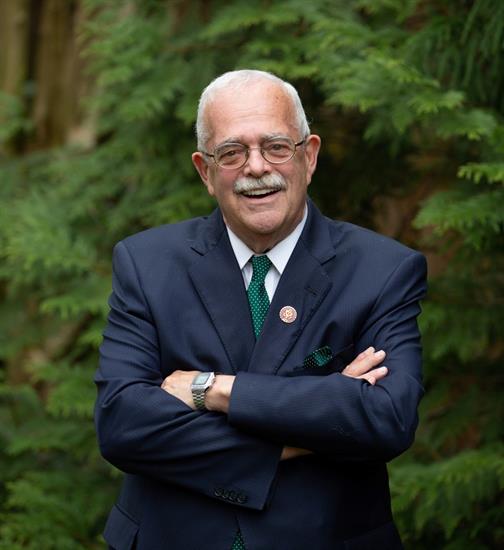What will happen to America’s oldest Black town?
by Jake Bittle, Grist
Princeville, North Carolina, the oldest community in the United States founded by formerly enslaved people, has been trapped in a cycle of disaster and disinvestment for decades. The town of around 1,200 people sits on a plain below the banks of the Tar River, and it has flooded more than a dozen times in the last century. The two most recent hurricane-driven floods, in 1999 and 2016, have been the most devastating in the town’s history.
In the aftermath of Hurricane Matthew, which submerged the town under more than 10 feet of water eight years ago, Princeville’s residents debated three distinct options: staying put on the town’s historic land, taking government buyouts to relocate individual families elsewhere, or moving the town itself to higher ground. But internal disagreements and a lack of funding made it difficult for the town to move forward with any of those choices in a comprehensive way. As a result, the damaged town hollowed out as residents and businesses left one by one, becoming yet another example of how slow and painful disaster recovery can be for rural and low-income communities.
Now, almost a decade after Hurricane Matthew’s devastation, Princeville’s fate is becoming clear — for better and for worse. The town has just received millions of dollars in new funding from the Federal Emergency Management Agency, or FEMA, to build a new site on higher ground, offering hope for a large-scale relocation. At the same time, a long-awaited levee project that promised to protect the town’s historic footprint has stalled out, making relocation harder to avoid as another climate-fueled hurricane season begins.
The idea to relocate the town first emerged after Hurricane Matthew, when the state of North Carolina helped Princeville buy 53 acres of nearby vacant land. The state also kicked in money to help town leaders plan a mixed-use neighborhood with new apartments and businesses, and it later bought another larger parcel adjacent to the 53-acre tract. Earlier this month, FEMA officials announced that they will send almost $11 million to Princeville to build out the stormwater infrastructure for the new town. Construction could begin before the end of the year.
When the development is done, it will contain the seeds of a new town center for Princeville. There will be a fire station and a town government building, as well as 50 new subsidized apartments to replace a public housing complex that was destroyed during Hurricane Matthew. Town officials are hoping that private developers will build dozens of single-family homes and businesses on the tract. This would make the 53-acre development almost as large and well-appointed as the old Princeville, with as many stores and almost as many homes.
When he announced the new funding, FEMA administrator Robert Samaan praised “Princeville’s commitment to build outside of the floodplain and protect their community,” saying the decision to move to higher ground “is a testament to their resilience.” But this was somewhat misleading: Many residents and town leaders, including the mayor, have sought for years to stay put on the town’s original flood-prone site. In 2016, Jones even tried to turn down a federal program to buy out flooded homeowners in the old town.
“We’re open to expansion, but we are not going to leave,” said the town’s mayor, Bobbie Jones, in an interview with Grist.
ut that option looks less viable than ever. Those who wanted to protect historic Princeville have long held out hope that the federal Army Corps of Engineers would repair and expand the old levee that defends the town from the caprices of the Tar River, whose overflowing banks have long been responsible for Princeville’s woes. The Corps’s original levee contained critical flaws that caused it to fail during floods in 1999 and again in 2016, but it took the agency until 2020 to secure funding from Congress to build a new and larger levee.
Jones touted this new levee project as proof that historic Princeville could survive, but earlier this year the Corps told residents that it was going back to the drawing board to review the project. The agency had discovered that building the planned levee would inadvertently cause flooding in the larger nearby town of Tarboro, on the other side of the Tar River. Officials said they couldn’t reduce flood risk in one place only to increase it in another. This is a cruel historical irony: The founders of Princeville only got access to the low-lying land in the 19th century because the white residents of Tarboro deemed it too flood-prone to use.
“Here we are in the midst of hurricane season again, and we’re just praying,” said Jones.
In response to questions from Grist, a spokesperson for the Corps said the agency is committed to flood protection in Princeville and is seeking funds that would allow it to commission a report looking at other options beyond the levee.
The setbacks on the levee project, combined with the sudden burst of progress on the new 53-acre development, seems to provide a bittersweet answer to the murky question of how Princeville will adapt to climate change. When it is complete, the new development will give Princeville a path toward long-term resilience, one that doesn’t require keeping most residents on land that’s destined to flood. But even this progress has come at great cost: Almost eight years after Matthew, many displaced residents have moved on for good, and even the promise of a new Princeville on higher ground may not be enough to draw them back.
“I understand the government moves slow,” said Calvin Adkins, a former resident of Princeville who took a government buyout and now lives across the river in Tarboro. “But when you’re talking about such a historic town, I just — in my heart of hearts, I was hoping that these things could have been done earlier.”


